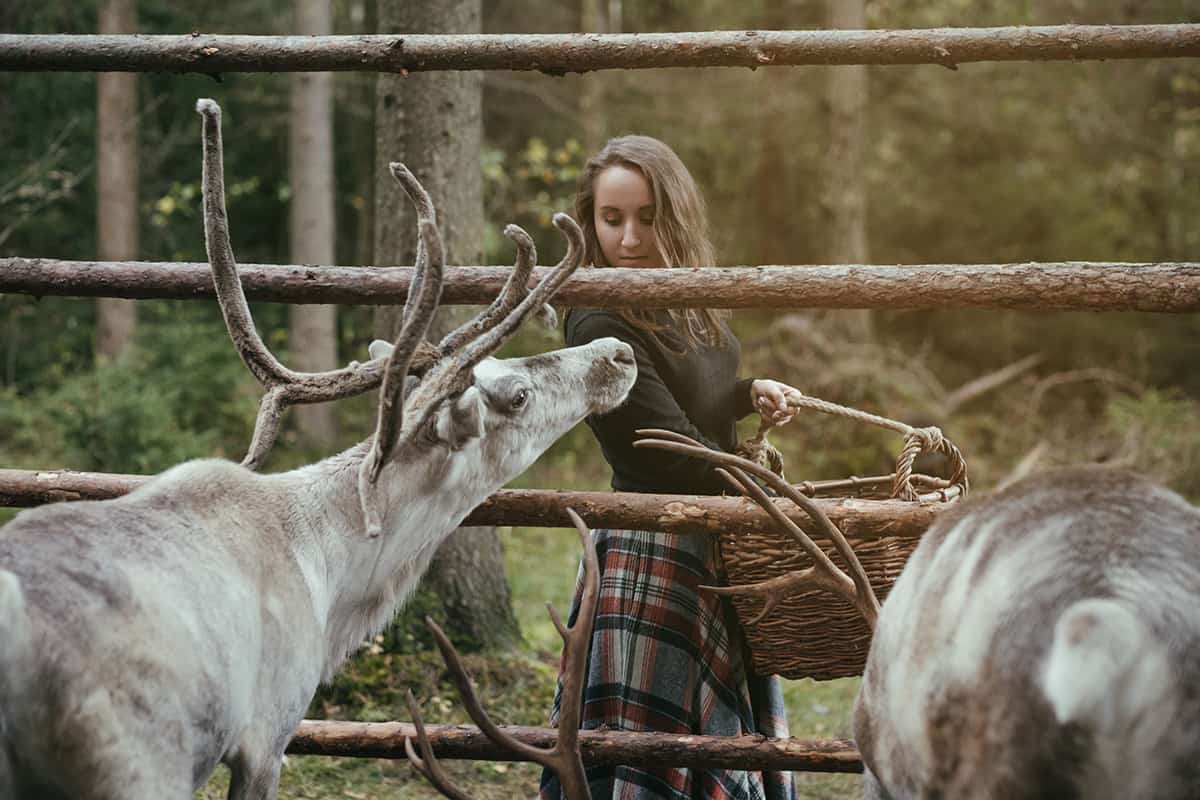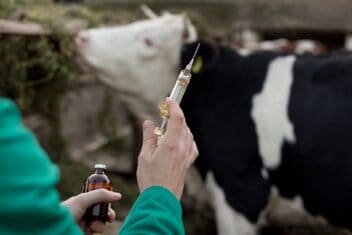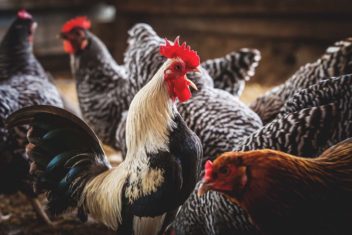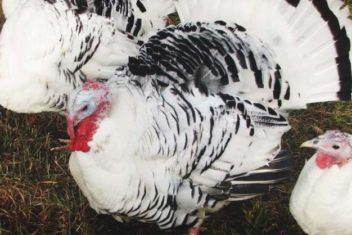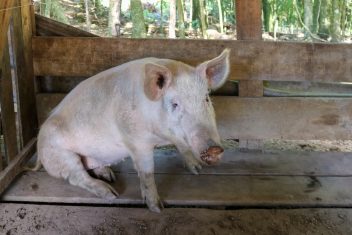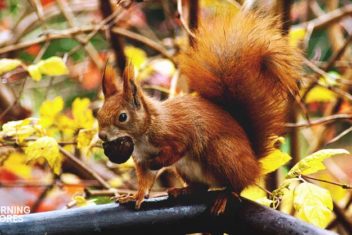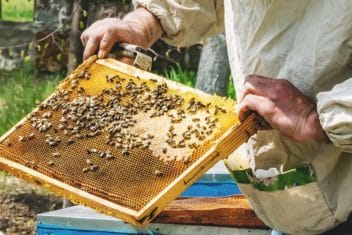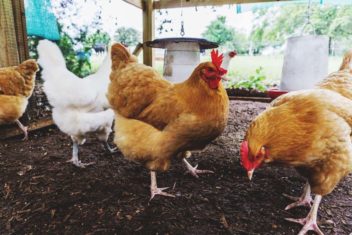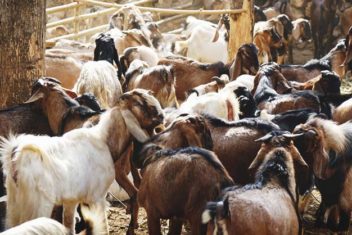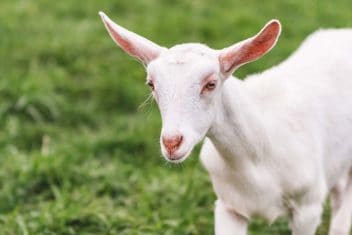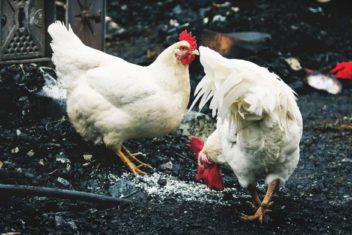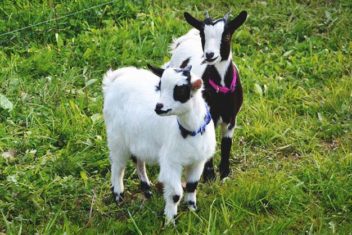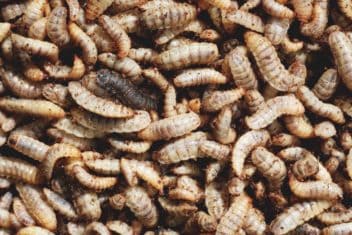Deer farming has grown in popularity as the demand for grass-fed, natural meats have increased. Perhaps that’s because venison is a lean meat that is high in protein and low in fat making it a perfect food for those on the paleo or keto diets.
Did we mention that they require less fodder and are less damaging to the land than cattle?
This article talks about the pros and cons of raising cervids, and what you need to do to raise healthy animals.
Why Should I Raise Deer?
The North American Deer Farmers Association states that raising deer for meat is one of the fastest-growing alternative agriculture industries in rural America, and generates $7.9 billion for the U.S. economy.
In fact, venison has even hit the fast-food world with Arby’s offering a seasonal sandwich. In fact, Arby’s couldn’t get enough US-produced venison for their promotion last year and had to outsource from New Zealand.
Deer farming is a fast-growing livestock alternative and venison is easy to sell these days.
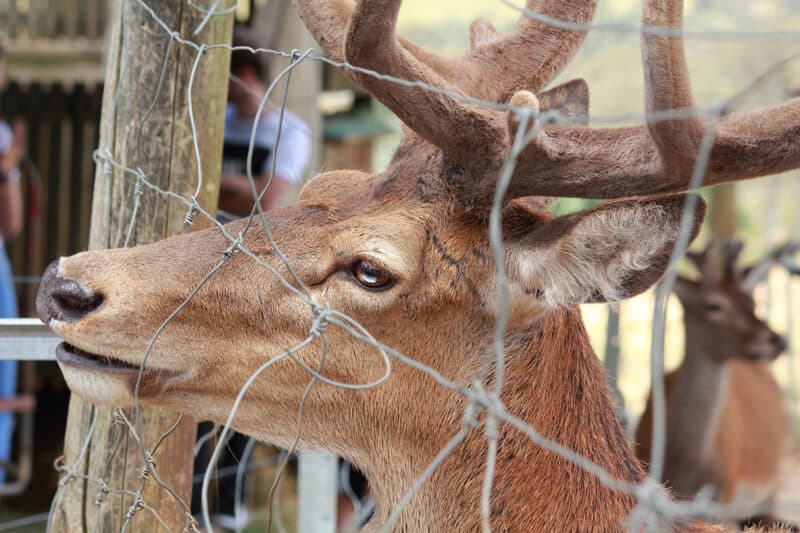
In the early 1900s, Native American tribes started raising cervids as a way to get back to their roots and feed their people.
Now, many farmers recognize the unique opportunities in raising these hardy animals that are native to the landscape, unlike other livestock.
Deer are in the cervid family, which includes elk, reindeer, axis (chital), sika (spotted deer), red, whitetail, and fallow deer.
There are several species of deer and they are adaptable to a wide range of terrains. However, it’s worth noting before you jump in that certain permits may be necessary for raising deer for meat in your state.
Pros of Raising Deer
The best way to decide if deer farming is right for you is to go visit some farms. Just google “deer farms” for your state and send an email to farmers in your area. You can find out where they bought their initial stock and see an approved set up.
If you’re still having a hard time deciding, here are some pros for raising deer:
- They mature quickly.
- Deer can reproduce for up to 20 years.
- Compared to cattle, they’re less damaging to fields and eat less fodder.
- Side uses include antlers, antler velvet, and hides.
Cons of Raising Deer
It’s not all good, however. There are a few things you should be aware of before jumping in to raising deer:
- Fencing can be expensive.
- Deer are heavily regulated by government agencies, so you need to get permits or licensing in most areas.
- Deer aren’t as domesticated as sheep or cattle, so care can be more of a challenge.
Species of Deer
There are three species of deer commonly raised for meat in North America. They are fallow deer, white-tailed deer, and elk. However, some states restrict native deer species, such as white-tailed and elk, from being raised.
Fallow and sika deer are two popular non-native species. The advantage of these deer is that they’re smaller and easier to handle. They also may be less regulated.
Permits
When deciding to get into deer farming, you need to do a bit of research. Unlike commercial livestock, deer have some additional regulations and permits that the farmer must abide by.
That’s because, due to the fact that cervids live in the wild, it’s important to make sure people don’t steal wild babies from the wild.
In addition, livestock deer require specific regulations pertaining to processing and transportation.
These regulations vary depending on what species you wish to raise.
States also vary in their requirements, though many states have joint regulations for cervids, in addition to regulations through the Department of Agriculture and the Department of Fish and Wildlife.
Typically, fish and wildlife regulate houses and fencing. Agriculture regulates the sale of products such as meat or antlers.
Cervid farmers are inspected twice per year by both departments
As with other livestock sold for meat, farmers need to maintain herd records for diseases that affect deer, such as tuberculosis, chronic wasting disease, and brucellosis (see our care section).
Feeding and Housing
Deer are browsers and do well out on pasture, especially where they have access to brush and small trees. They flourish in a rotational grazing system and get the most nutrients from good pasture.
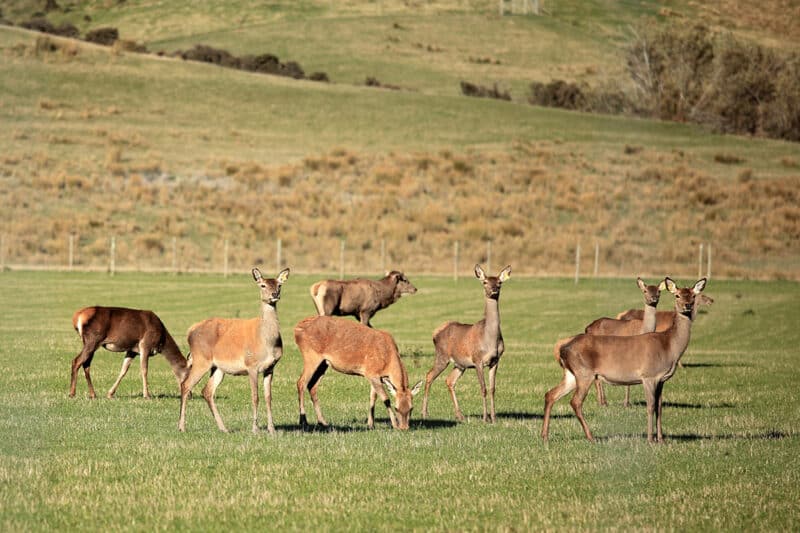
However, during the colder months, they need hay to meet their nutritional needs. You can also supplement with a good grain developed for deer. Both Purina and Antler King have a line of deer feeds.
Before you introduce deer, it’s always a good idea to get a soil sample from your pastures. If your soil is low in nutrients, the graze will be of poor quality and you’ll need to offer supplement feed. That raises your expenses.
If your pasture quality is poor you can reseed one section at a time with hardy grasses native to your area. Switchgrass, big bluestem, and gamma grass are often better choices than fescue and clover.
One of the requirements that Fish and Wildlife looks at is if the deer have adequate pasture.
On average each adult animal needs 1000 square feet of space. So, an acre of land with good grazing accommodates 2-3 adult whitetail deer, 7-10 adult fallow deer, 4-7 adult red deer, 7-8 axis deer, and 1-2 elk.
In addition, you need to plan for protection from the elements, and methods to feed and water your animals. Many deer farmers use simple three-sided structures in the field where the deer can get out of inclement weather. Face them away from the prevailing winter winds.
It’s wise to consider food and water dispensation from outside the pen for personal safety during the rut season. Male deer, not unlike other male animals can be dangerous during the breeding season, so it’s best to have water tanks along the fence line.
This way you can easily monitor and re-fill them without entering the field.
Caring for Your Deer
A deer’s social structure is based on the herd. Females and their young create one herd, while adult males form their own. They may remain separate for most of the year, combining only during the breeding season (also known as the rut).
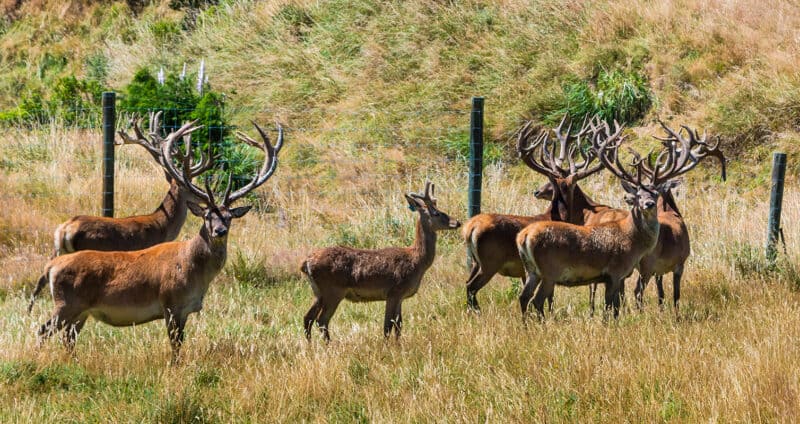
Some farmers follow the more natural way of letting the does raise their fawns. Others bottle-raise babies to have more control over the food intake and the behavior of the animal.
This way, the deer get used to being handled and are easier to treat when there’s a medical problem or they need inoculations.
A word of caution: Bucks kept for breeding shouldn’t be bottled raised. When they get older they often have behavior issues during the rut and can become extremely aggressive.
Imagine your obnoxious billy goat at 450 pounds!
Artificial insemination is growing in popularity among deer farmers. Name recognition and use of pedigrees are growing among breeders.
Finding a Veterinarian
Finding a deer-oriented veterinarian can be difficult. Vets aren’t trained in exotic animals in vet school and your vet may not have any experience with treating deer. Although deer have many similar characteristics to other ruminants, a large animal vet usually works with more common animals like cattle and goats.
The best thing to do is approach your vet before you purchase your animals and make sure they’re on board. If your vet is hesitant because they don’t feel they have knowledge in a species, you can reassure them that you are willing to be on the learning journey with them.
The North American Deer Farmers Association puts out information on health care topics for you and your vet.
Deer Diseases
There are several diseases that can affect deer. You and your vet will want to map out a plan to protect your herd.
Tuberculosis
The bovine form of tuberculosis can be spread between cattle and white-tailed deer. It’s spread primarily by airborne particles but can also be transmitted on food sources.
Primary symptoms are coughing, nasal discharge, and inability to breathe. Currently, there are no vaccines available for cervids, however, there is one for cattle.
Chronic Wasting Disease
Chronic wasting disease is a neurological disease that causes degeneration of the brain. At this time, there is no vaccine. Related diseases include scrapie in sheep and goats, mad cow disease in cattle, and Creutzfeldt-Jakob Disease in humans.
Most states require testing of all animals that are older than one year and that die for any reason.
Brucellosis
Brucellosis is considered uncommon in captive cervids and is another disease that also affects cattle. It’s more common in elk and moose.
It’s spread by body secretions including saliva, urine, pus, and semen. The disease can also be spread to the baby during gestation, resulting in a small, unhealthy fawn or calf.
Fencing for Deer
As you may suspect, your biggest investment will likely be fencing. All of you with gardens out there know that a tall fence is the best way to keep deer from invading.
A tall fence is the best way to keep deer inside an enclosure, as well.
An exterior fence should be a minimum of 8 feet above ground level for its entire length and use heavy gauge wire. A woven wire that is between 12.5-14.5 gauge is the best. The wooden corner posts should be 5 inches in diameter.
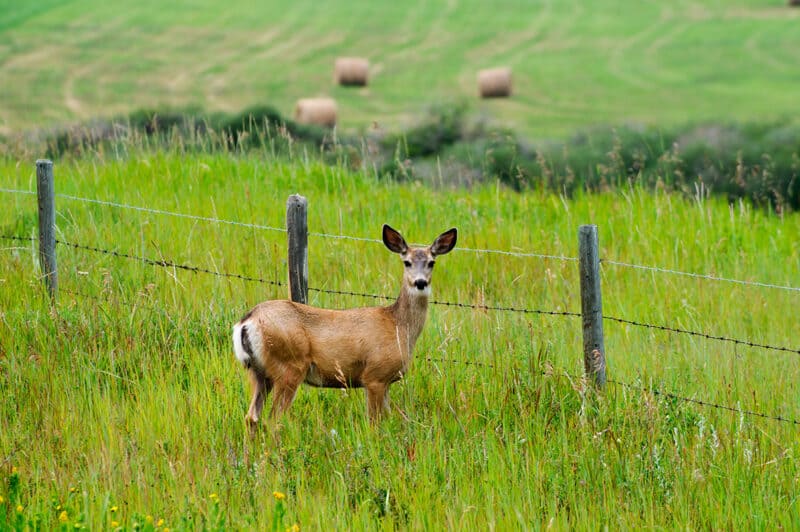
Wooden posts work well because they’re sturdy. Posts should be set into the ground at a minimum depth of 3 feet.
Having a squeeze chute or crush is something you definitely want to plan for, as well. This is a great help whenever you need to give medical treatment or transport an animal.
Putting shade cloth, or wooden snow fence on the outside of the barrier fence is a good plan. Deer, as prey animals, are skittish and this visual barrier helps keep them calm. It can also deter predators.
